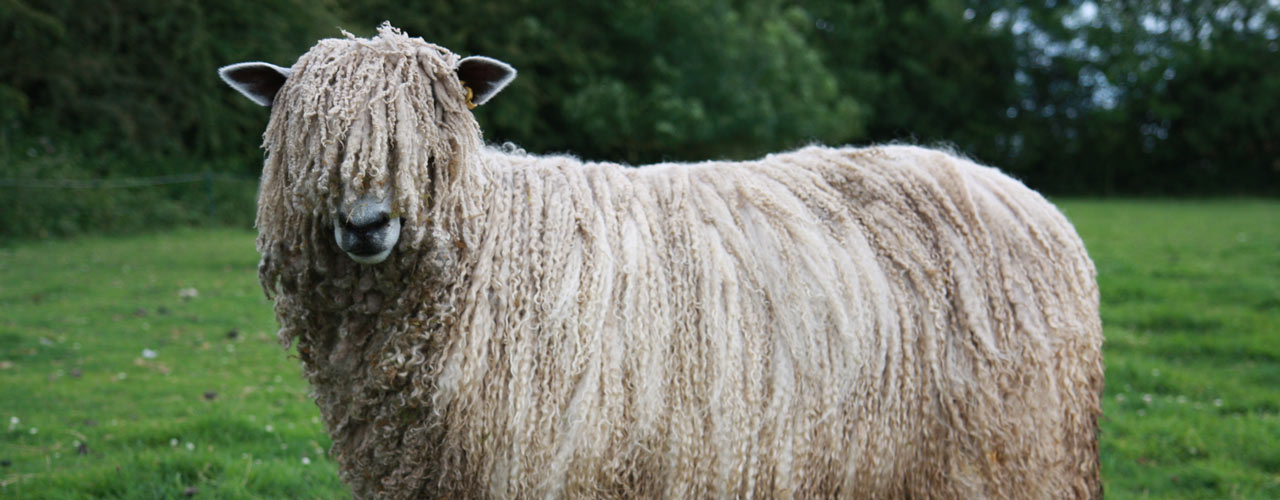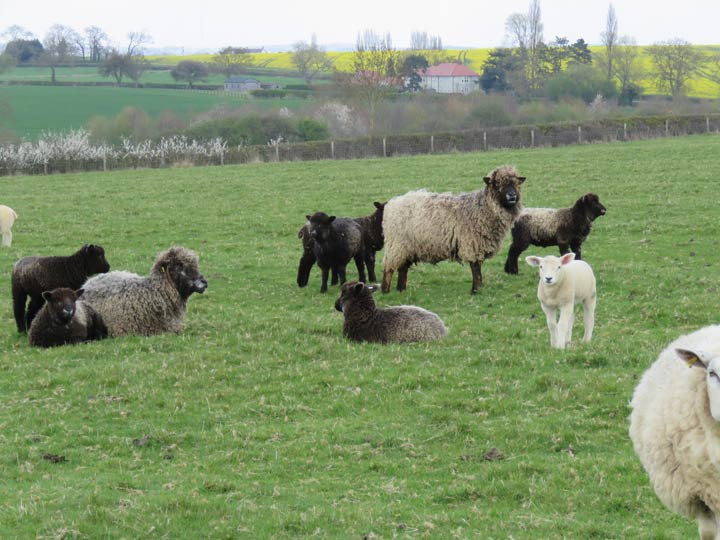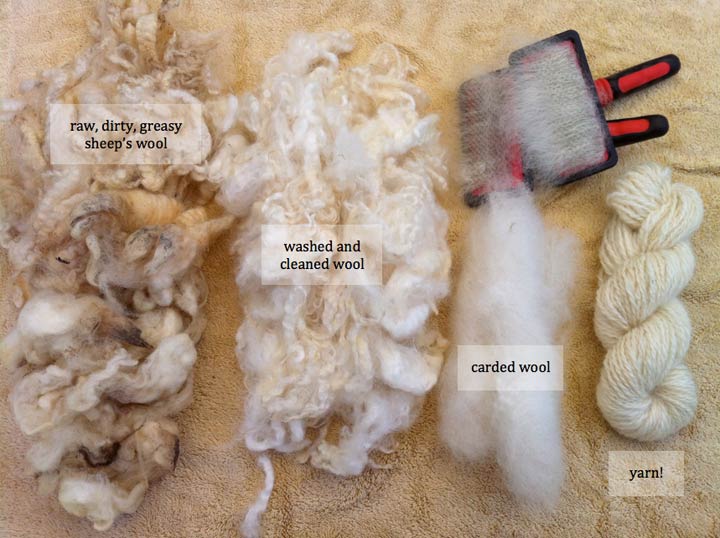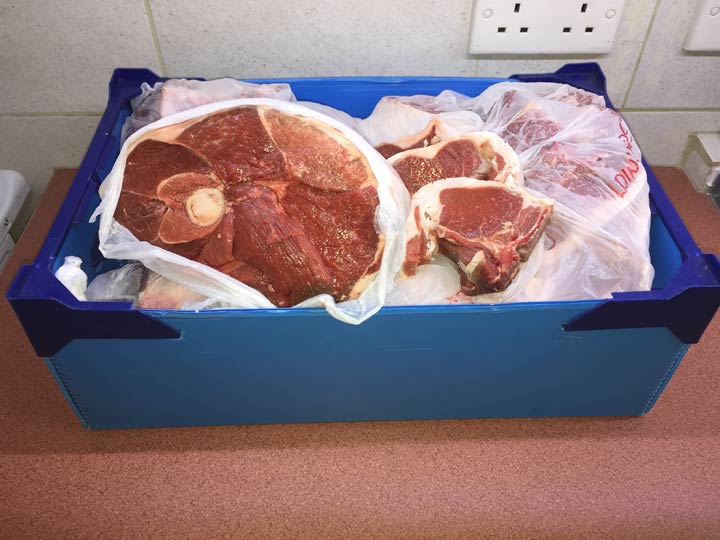
The role of the Leicester Longwool sheep today
The Leicester Longwool sheep has existed for many years although the present breed looks quite different to the sheep improved by Robert Bakewell in the 1750's (see History section). This changing of the breed in terms of size, time to maturity, fat level and wool quality shows the breed's ability to move with changing fashions and market demands.
The current breed is hardy, long –lived, easily managed and the ewes are good mothers. The sheep can survive in many different climates, including in the North of England, in exposed conditions, with little extra food and sometimes with little water. They have been exported to several countries including the USA, Australia, New Zealand and Tasmania, with the rams used as crossing sires in many places.
The above characteristics, together with the long attractive lustre fleece and the friendly nature make the current Leicester Longwool ideal for today's emphasis in farmland management on stewardship and the environment. They, along with other traditional breeds, can be managed with minimum impact on the land.
A recent development has been the establishment of a black flock book. Although it is known that Bakewell had at least one black sheep the breed has been considered to be white. The popularity of black sheep (or more accurately coloured sheep) has grown over the past ten years, in part due to the demand for its attractive fleece.
Characteristics of Leicester Longwools
The head is bold and strong on a short thick neck. The crown is well covered with wool, and the face covered in white (black) hair. The ears are blue (on white sheep), fine and fairly long with occasional spots. The muzzle should be strong with even jaws, and nostril dark in colour. The body is deep and of considerable length with full flanks. The back is broad and level, the ribs being well sprung. The legs are of medium length with good bone, well set up on the pasterns on dark feet. The legs are covered in white (black) hair, the back legs usually being covered in wool.
The Leicester Longwool is a large, polled and attractive sheep. There are now two permitted colours, White and Black. The breed characteristics are the same for both colours; the only difference is that each colour has a separate "Flock Book". The Black Leicester was admitted to registration in 1986. Since then they have become very popular with smaller breeders and those interested in wool. They are docile when kept in small flocks.
The Ewes are very good mothers and the rams are increasingly used for improving the wool on other breeds.
Keeping them to preserve the blood lines
Genetics
There has always been a certain amount of controversy about the colouring of Leicester Longwool sheep. For many years only the white fleeces were accepted and black lambs were sent to the butcher. However, by 1984, it became apparent that the black animals were not 'rogues', so it was agreed to accept these as registerable animals, albeit on their own separate register. Since then, the coloured animals have become very popular, especially with hand spinners. When we heard that the Ryeland Sheepbreeders have had some research done by Cardiff University to look at markers for fleece colour in their sheep and that their results were fairly conclusive, we asked if we could piggy-back on the research and compare the Leicester Longwool genes and see if we got a similar result. The researchers have now carried out a small number of blood tests in order to see if our sheep carry markers which would account for fleece colour. The results were not quite as conclusive as expected. So we are now in a second phase of the research.
On the recommendation from the research team in Cardiff we have now sent another 18 samples covering the following:
- White fleeced sheep
- Pale coloured fleeced sheep
- Dark coloured fleeced sheep
- Black fleeced sheep
- Piebald fleeced sheep
We are hoping that the results of these tests will give us more idea about the genetic makeup of the Leicester Longwool sheep in relation to fleece colour and face/legs colour. This will help us to know where we should be concentrating our efforts in order to keep the strength and diversity of the breed.
We have also given some wool samples to a Professor from York University who has been analysing parchments. From this research he hopes to be able to use wool samples to give an indication of breed and place of origin. Because the parchments contain hair follicles and are mostly sheep skin, they have a DNA breakdown from the research they have already done which they hope to apply. They have isolated DNA that they believe relates to the 'improved Leicesters' bred by Robert Bakewell.
Keeping them for wool
The fleece of a Leicester Longwool should be dense, long, and silky with a fine lustre and even texture, the average rate of growth can be just over three centimetres per month. It should hang in lock formation, freely without felting and varies in colour from cream to white, depending on the area and natural nutrients in the ground. The lustre wool is currently one of the higher priced fleeces; almost double that of some commercial flocks.
The fleece is popular with hand spinners and as a rare breed is exempt from the Wool Board regulations and can be sold privately. The wool is very versatile due to the length of staple and can be spun from raw fleece, combed or carded and is used in a number of crafts such as knitting, rug making, tapestry, wall hangings, felting, weaving and soft furnishings.
Although a particularly good natural colour the wool does take dye well, especially many of the lovely natural dyes now used.
Coloured wool, which can vary from black, dark chocolate, dark grey with silver lights to a pale fleece with some darker staples are now very popular with spinners and most craft workers to produce natural variegation in their work or to put pattern in cloth or knitting.
Keeping them for Meat and Mutton
While the lamb is lean and good quality the real strength of the Leicester meat is being kept for eighteen months or so and then marketed as mutton. This is now being recognised as important by top chefs, and frequently featured on television cook shows. Excellent taste and fine texture, make it very suitable for slow cooking for Special Roasts and casseroles which can be done in 'slow cookers'.
It was recognised at an international meeting in the USA that one of the most important ways to preserve the sheep, is to encourage young people to value them, enjoy them and to continue to breeding them





